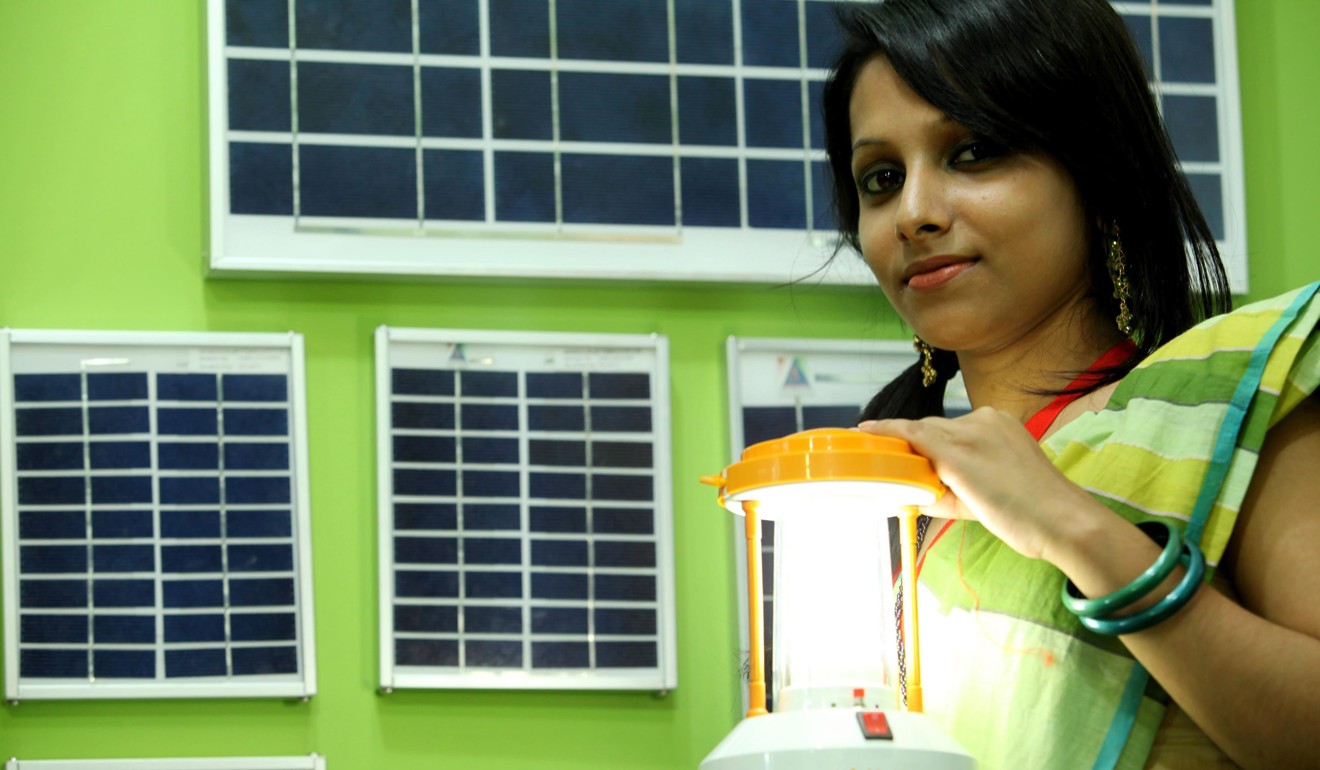
Bangladesh inches toward green future with opening of newest solar power plant
The South Asian country is aiming to generate 10 per cent of its power from renewable energy sources by 2020
Bangladesh’s electricity generation from renewable sources has passed the 5 per cent mark with the opening of a major new solar plant – boosting hopes the country might meet its goal of getting 10 per cent of power from renewables by 2020, experts say.
The new 28 megawatt solar power plant in Cox’s Bazar District is the largest yet opened in the country, following the earlier construction of a 3MW plant. The solar plants come on top of the widespread use of solar home systems in the low-lying country, considered one of those most vulnerable to climate change.
Currently about 5.2 million small-scale solar home systems provide electricity to almost 12 per cent of Bangladesh’s 160 million people, said Dipal C. Barua, president of the Bangladesh Solar and Renewable Energy Association.
He called the new plant “good news” for the country, saying the accelerating construction of solar power facilities “will build confidence among future investors”.
Myanmar welcomes Bangladesh plan to start Rohingya repatriation
The new 116-acre solar park will supply enough electricity to meet about 80 per cent of power demand in the Teknaf sub-district where it is located, said Mahmudul Hasan, chief financial officer for Joules Power Ltd.
That area has about 300,000 power users, though little in the way of industrial or large commercial users, he said.

Nuher Latif Khan, managing director of Technaf Solartech Energy Ltd., a subsidiary of Joules Power that owns the plant, said the plant had begun operations ahead of schedule.
In Bangladesh, “the future of solar power is very fantastic”, he said, noting that the company “definitely” planned to invest more in renewable energy, including potentially wind power.
Khan said the solar park can produce up to 28MW of solar electricity at peak capacity and has been contracted to provide 20MW to the government grid.
Barua said several other large solar plants are in the pipeline in Bangladesh, after receiving government approval, with a few at advanced stages of construction. While solar plants need a large amount of initial investment to set up, he said, they have very small operational costs afterward, unlike plants that need ongoing sources of coal or other fossil fuels.
The government has supported the construction of rooftop solar plants on factories and other commercial buildings, he said, with some facilities on large plants expected to generate a megawatt or more each.
Arrested and killed: inside Bangladesh’s war on drugs
With such solar plants, thousands of factories in Bangladesh should be able to meet their own electricity needs, and contribute surplus power to the national grid.
“I think one day we will see every building has a rooftop solar power system,” Barua said. However, he admitted that finding available land to set up ground-level solar plants is a major challenge in densely populated Bangladesh.
Sheikh Reaz Ahmed, director of the Sustainable and Renewable Energy Development Authority, said the country’s 2008 renewable energy policy calls for generating 10 per cent of electricity from renewables by 2020.
With the country expected to generate 20,000MW of electricity in total by the date, renewables would have to reach 2,000MW to hit that target, he said.
Watch: Makeshift houses of Rohingya refugees cover hills in Bangladesh
So far Bangladesh generates just over 530MW from renewables, nearly half of that from hydropower plants, he said.
But the country is set to put online another 600MW of renewable power in 2019 alone, he said, with another 1,100MW rolled out in 2020 and 2021. Altogether, plants now in the pipeline should bring the country’s renewable energy generating capacity to 2,235MW by 2021, Ahmed said.
Not all the construction is progressing smoothly, however, with some plants tied up in problems with land acquisition and other issues, he said. Meanwhile, he added, energy generation from fossil fuels also is rising to meet soaring demand for energy in Bangladesh.
Last year, Bangladesh’s cabinet committee on public procurement approved a proposal to construct 10 new oil-fired power plants, capable of generating 1,800MW of electricity.
In January, construction also began on a 1,200MW coal-fired power plant in Cox’s Bazar, funded by the Japan International Cooperation Agency.
That means boosting Bangladesh’s percentage of renewable energy above 10 per cent will not be easy, because “each year total power generation from traditional sources will go up” too, Ahmed noted.

